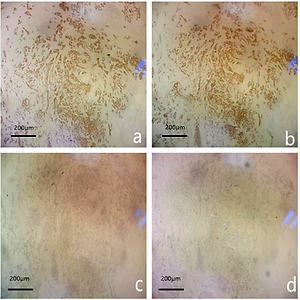Current issue
Archive
Manuscripts accepted
About the Journal
Editorial office
Editorial board
Section Editors
Abstracting and indexing
Subscription
Contact
Ethical standards and procedures
Most read articles
Instructions for authors
Article Processing Charge (APC)
Regulations of paying article processing charge (APC)
RADIOLOGY / RESEARCH PAPER
Diagnostic performance of superb microvascular imaging combined with shear-wave elastography in distinguishing invasive ductal carcinoma molecular subtypes
1
Harbin Medical University Cancer Hospital, Nangang District, Harbin, China
Submission date: 2021-08-23
Final revision date: 2021-12-27
Acceptance date: 2022-01-07
Online publication date: 2022-01-13
KEYWORDS
TOPICS
ABSTRACT
Introduction:
The aim of the study was to explore the diagnostic value of combining superb microvascular imaging (SMI), shear-wave elastography (SWE), and the Breast Imaging Reporting and Data System (BI-RADS) to distinguish different molecular subtypes of invasive ductal carcinoma (IDC).
Material and methods:
A total of 239 surgically confirmed IDC masses in 201 patients underwent conventional ultrasound, SMI, and SWE examination; information such as echo pattern, posterior features, margins, SMI pixels, and hardness of the masses was recorded. According to the St. Gallen standard, breast masses were classified as Luminal A, Luminal B, HER2 overexpression, and triple-negative subtype. We further explored the differences between different molecular subtypes of IDC.
Results:
Luminal A subtype had the following characteristics: low histologic grade, posterior acoustic shadowing (p = 0.019), spiculated margins (p < 0.001), and relatively soft. Luminal B subtype was characterized by low histological grade (p < 0.0001), posterior acoustic shadowing or indifference, and indistinct margins. HER2 overexpression breast cancers were characterized by high histological grade, enhanced posterior acoustics or indifference, calcifications (p = 0.005), spiculated or indistinct margins, vascularity (p = 0.005), and relative stiffness. Triple-negative breast cancers had the characteristics of high histological grade, posterior echogenic enhancement, lack of calcifications, circumscribed or microlobulated margins, low blood flow signals, and stiff tissue (p = 0.013).
Conclusions:
Our study demonstrated the significant differences and trends among the four IDC subtypes by the combined application of SMI, SWE, and BI-RADS lexicon, which are of great significance for early diagnosis, selection of treatment methods, and evaluation of prognosis of IDC.
The aim of the study was to explore the diagnostic value of combining superb microvascular imaging (SMI), shear-wave elastography (SWE), and the Breast Imaging Reporting and Data System (BI-RADS) to distinguish different molecular subtypes of invasive ductal carcinoma (IDC).
Material and methods:
A total of 239 surgically confirmed IDC masses in 201 patients underwent conventional ultrasound, SMI, and SWE examination; information such as echo pattern, posterior features, margins, SMI pixels, and hardness of the masses was recorded. According to the St. Gallen standard, breast masses were classified as Luminal A, Luminal B, HER2 overexpression, and triple-negative subtype. We further explored the differences between different molecular subtypes of IDC.
Results:
Luminal A subtype had the following characteristics: low histologic grade, posterior acoustic shadowing (p = 0.019), spiculated margins (p < 0.001), and relatively soft. Luminal B subtype was characterized by low histological grade (p < 0.0001), posterior acoustic shadowing or indifference, and indistinct margins. HER2 overexpression breast cancers were characterized by high histological grade, enhanced posterior acoustics or indifference, calcifications (p = 0.005), spiculated or indistinct margins, vascularity (p = 0.005), and relative stiffness. Triple-negative breast cancers had the characteristics of high histological grade, posterior echogenic enhancement, lack of calcifications, circumscribed or microlobulated margins, low blood flow signals, and stiff tissue (p = 0.013).
Conclusions:
Our study demonstrated the significant differences and trends among the four IDC subtypes by the combined application of SMI, SWE, and BI-RADS lexicon, which are of great significance for early diagnosis, selection of treatment methods, and evaluation of prognosis of IDC.
We process personal data collected when visiting the website. The function of obtaining information about users and their behavior is carried out by voluntarily entered information in forms and saving cookies in end devices. Data, including cookies, are used to provide services, improve the user experience and to analyze the traffic in accordance with the Privacy policy. Data are also collected and processed by Google Analytics tool (more).
You can change cookies settings in your browser. Restricted use of cookies in the browser configuration may affect some functionalities of the website.
You can change cookies settings in your browser. Restricted use of cookies in the browser configuration may affect some functionalities of the website.



